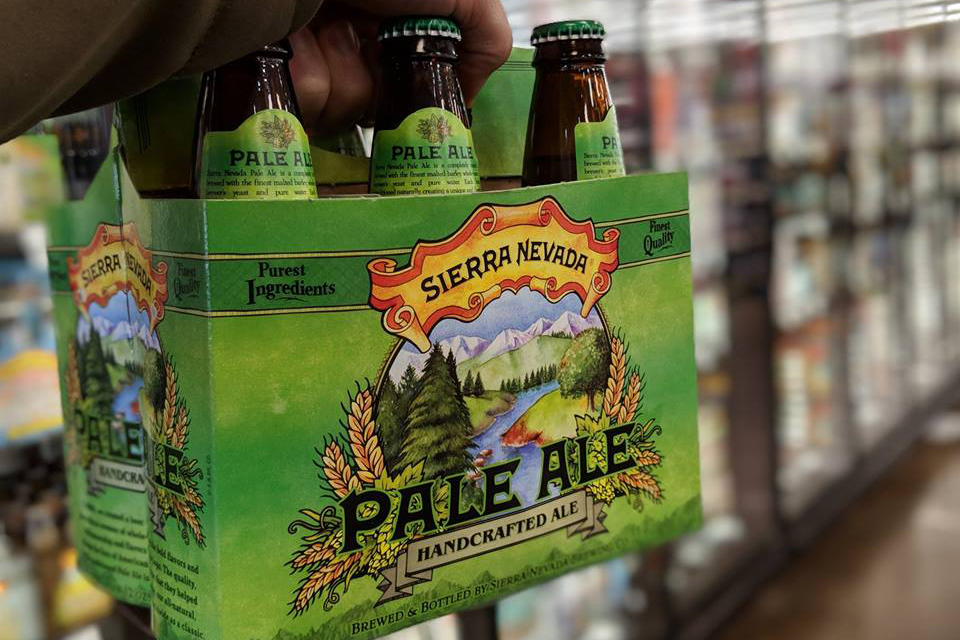The pale ale isn’t sexy. It’s not extreme. It’s not a palate wrecker. But, believe it or not, there was a time when this humble beer style was the hottest thing going (think of it as a reverse She’s All That). In fact, the argument can be made that the American pale ale was the spark that ignited the fuse on the craft beer revolution.
From the mid-1970s through the early 1980s, craft beer pioneers like Anchor Bering and Sierra Nevada Brewing Company perfected their recipes for pale ales, taking original English ale ingredients and processes then refining them to use a balanced blend of malts and American-grown hops. Within a few years, Anchor’s Liberty Ale and Sierra Nevada Pale Ale would help provide the financial backbone for those breweries to grow and thrive, setting the stage for more small breweries and more experimentation.
For decades, it was the norm for every American craft brewery to offer its own signature pale ale recipe as a part of a core lineup. Within the relatively narrow parameters of the pale ale style, it became difficult to stand out. The number of pale ales lining store shelves was overwhelming. In a crowded field without much diversity, breweries began to shelve their pale ales for the more aggressive India pale ale style, where balance and moderation are rarely encouraged.
As craft beer continues to grow in sheer numbers, as well as style diversity, it’s the perfect time to look back on the American pale ale, recognize its place in the pantheon, and celebrate the breweries that are still making excellent pale ales.
Most American pale ales are crafted of American two-row (or similar) malt, American hops (like Cascade), and American ale yeast.
Most American pale ales are crafted of American two-row (or similar) malt, American hops (like Cascade), and American ale yeast. This simple foundation creates an easy-to-drink beer with a toasted biscuit base and bright but balanced hop profile. American pale ales pour in a variety of light colors from golden to amber, hence the “pale” signifier in the name. The middle of the road mouthfeel and higher carbonation create a refreshing drink with more tooth than summer ales or light lagers. The alcohol by volume percentage hovers in the 5 to 6 percent range, enabling casual consumers to enjoy more than one in a sitting.
The best way to learn about pale ales isn’t to read about them. It’s to drink them. Search out these beers for a representation of the best the style has to offer in today’s market.
Sierra Nevada Pale Ale
Sierra Nevada Brewing Company

Perhaps the quintessential American pale ale, Sierra Nevada‘s all-time classic is still being brewed and is available in a wide range of formats. The pine and grapefruit hop notes will make this your favorite new (old) beer.
Stone Pale Ale 2.0
Stone Brewing Company

Never one to follow the rules, Stone uses German hops in its reimagined Pale Ale 2.0 recipe. The result is a classic biscuit malt profile with accents of stone fruit and citrus.
Zombie Dust
3 Floyds Brewing Company

While technically classified as a pale ale, Zombie Dust pushes up against the big hop signifiers of many IPAs. While the hops here are big and bold, the beer is still crushable.
MO
Maine Beer Company

A show of restraint and craft, lemon and pine flavors are followed by a dry finish. MO is complex while still being an everyday, all-occasion beer.
Daisy Cutter Pale Ale
Half Acre Beer Company

A balanced pale ale, Daisy Cutter provides a welcome combination of sweet and bitter. It brings a decadent dankness to the pale ale scene with bonus hints of mango and papaya.




